YOU SHOULD SUBSCRIBE TO CLIMATE CHANGE WEEKLY.
IN THIS ISSUE:
- Persistent Lies about Green Power
- Podcast of the Week: John Kerry Wants to Emulate COVID Lockdowns for Climate Change (Guest: Gregory Wrightstone)
- Groundwater Discovered Beneath Antarctica’s Ice
- In A Bad Market, Green Tech Takes Biggest Dive
- Video of the Week: Climate Change at Davos
- BONUS Video of the Week: Climate Lunatic Smears Cake on Mona Lisa
- Climate Comedy
- Recommended Sites
Persistent Lies about Green Power
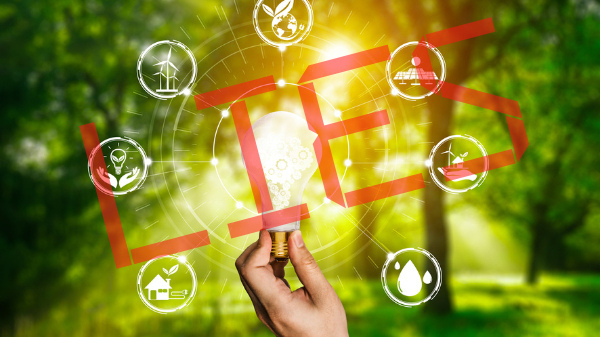
When drug companies try to sell you a particular cure for what ails you, the television ads typically consist of 10 seconds of saying how good the drug is and 20 seconds of disclaimers and warnings about possible negative side effects. If only renewable energy companies were that honest!
To my great annoyance and disgust, a power company in Texas promises the state’s electricity users can choose a plan that delivers electricity 24 hours a day powered by the sun. Solar power.
As anyone exercising an ounce of common sense must realize, that is a lie. As sunny as Texas and much of the southwestern United States are, the sun doesn’t shine 24 hours a day anywhere on Earth. That means the electric power you use at night or during cloudy or rainy days is coming from other sources.
It is not until you go to the company’s website or call them that you get to see the disclaimers in the fine print. What they are really selling you is a plan that purchases renewable energy credits equivalent to 24 hour a day of solar. That’s not at all the same as purchasing solar power.
In fact, the credits may be awarded for generation by wind turbines, biofuel production, biomass burning, or even sales of electric vehicles. Or it could be a combination of these. It could even be fraudulent, as past carbon offset credit schemes have so often proven to be.
Numerous scammers have claimed to generate green energy credits but do not actually undertake or complete the projects that are supposed to offset the carbon dioxide emissions and generate the credits. They have bilked taxpayers and investors out of billions of dollars. What homeowner or business buying 24-hour solar would know whether the renewable energy credits are being purchased by the company and reducing emissions?
The only thing we can say for sure about this so-called solar plan is that it is not providing 24-hour-a-day solar. Most of the time the electricity is probably being generated by another source, which in Texas is likely to be natural gas, coal, or nuclear.
Misleading advertising and outright fraud are all too common among companies and politicians promoting green energy schemes. Two of the biggest scams are biofuels and biomass burning for electric power.
Trees are carbon sinks, removing carbon dioxide from the atmosphere for photosynthesis and storing it in their limbs, roots, and trunks. When trees are cut down, they cease to remove CO2 from the atmosphere, and what is left behind after logging, as it decomposes, releases stored CO2 back into the air. Numerous studies show when waste materials or even whole trees are processed to make usable wood pellets for fuel, more CO2 is released. Even more is released when the wood pellets, waste timber, and whole trees are burned to produce power.
Even if new trees are planted, they remove carbon dioxide only slowly over time, as opposed to the immediate release when they are burned. As a result, “[i]t takes decades of regrowth to offset the carbon released in burning before the net addition of carbon to the air even equals the amount released if power plants had just used fossil fuels,” wrote the Los Angeles Times (LAT) a couple of years ago. Meanwhile, even more trees are being harvested for fuel, carbon dioxide sequestration declines, and atmospheric CO2 levels increase.
Burning wood to provide electricity “produces two to three times as much carbon per kilowatt hour as burning coal or natural gas. … To replace just 2% of the world’s fossil fuels with more wood would require doubling the commercial harvest of trees,” concluded the LAT, which would devastate the world’s forest ecosystems and biodiversity while removing a huge carbon sink.
And that’s when the companies keep their promises to plant new trees, maintain the forests, and ensure the trees grow to maturity. The news is even worse when, as detailed in a recent BBC story, the claim of tree planting is itself fraudulent, whether allegedly for biofuel replacement or as a direct carbon dioxide removal/carbon credit scheme. Sometimes money is collected and credits are given but no trees planted. In other cases, the trees are planted in unsuitable locations or are the wrong species for the site, and the trees die. The dead trees then add carbon dioxide and methane to the atmosphere as they decompose. In the Philippines and India, grand tree planting programs were funded by the sale of carbon dioxide credits, only to have those in charge of the program abandon the “forests” once the saplings were in the ground. In the Philippine case, an audit found 88 percent of the trees failed. I’m not typically a gambling man, but I would wager that 100 percent of the carbon credits were cashed in.
Criminal and civil enforcement of these agreements is almost entirely absent, because no agency with authority exists or no common method for determining the amount of carbon dioxide “removed” is determined in advance for most of these schemes, especially with international programs. As a result, corporations get away with greenwashing on a massive scale, making self-congratulatory claims of being carbon-neutral or moving that way, while emitting the same or even more emissions than they had before grandly taking up the “climate fight.” Often it’s simply hard to account for or track the success of the claims. In other cases, corporations’ assertions of going green consist of nothing more than a series of claims made in a PR campaign. Rarely are these statements investigated and confirmed. In the rare cases where greenwashing is exposed, the common practice is for the companies to issue a mea culpa. They say, in effect, “Okay, you caught us cheating, but we’re serious this time, and we’ll really start to get green now.” Little or no penalty results from these scams—maybe a donation/payoff to a radical green group. Often no concerted, consistent investigation of the follow-through on their new green commitment is undertaken.
As for biofuels, they no longer typically require more energy to produce than they deliver, thanks to technological improvements and increased efficiencies, but it is still doubtful they produce net benefits for the environment or the climate. The U.S. Environmental Protection Agency writes,
[B]ecause many biofuel feedstocks require land, water, and other resources, research suggests that biofuel production may give rise to several undesirable effects. Potential drawbacks include changes to land use patterns that may increase GHG emissions, pressure on water resources, air and water pollution, and increased food costs. Depending on the feedstock and production process and time horizon of the analysis, biofuels can emit even more GHGs than some fossil fuels on an energy-equivalent basis. Biofuels also tend to require subsidies and other market interventions to compete economically with fossil fuels, which creates deadweight losses in the economy.
In addition, because the dominant biofuel—ethanol—contains less energy than an equivalent amount of regular gasoline, vehicles’ fuel mileage declines as ethanol is added to the mix. As a result, more fuel is used than would have been consumed without the biofuel.
While the expansion of green energy is not reducing overall carbon dioxide emissions or preventing climate change (as if that were possible), it is wreaking havoc in electric power systems in the United States and abroad. In California, the United States as a whole, India, and elsewhere, dozens of stories have been published in recent months warning of widespread electric power shortages already occurring or looming, as the supply of reliable electric power wanes because dozens of fossil fuel, nuclear, and hydroelectric power plants are being prematurely closed and replaced with wind, solar, and sometimes a small percentage of battery backup.
Wind and solar power are particularly unsuited to supply modern, interconnected power systems because they work only when the weather conditions are just right.
A large-scale power grid consists of two segments: baseload power and peaking power. Baseload power is the minimum amount of energy needed for the grid to function properly while delivering power on demand to every user who needs it during a normal day. The grid requires a fairly consistent flow of power. Coal, nuclear, and to a lesser extent natural gas have, for a century or more, served developed nations’ baseload demand because they operate full-time, with onsite backup to provide power during routine maintenance or breakdowns.
Peaking power is the additional power needed when the system is faced with unusually high demand, such as during the summers in the southern United States, Asia, and India, and during the cold winters in northern states and Scandinavian countries. Natural gas, where available, often serves to provide peaking power because natural gas plants can be built to scale, fuel can usually be delivered as needed, and facilities can be cycled on and off quickly as needed.
Neither wind nor solar can be relied on for either baseload or peaking power. Wind turbines generate power only when the wind blows between certain speeds, and the power they generate fluctuates constantly with wind gusts. Solar provides no power at night or when the cells are covered by snow, ice, or soot, and it provides reduced power on cloudy days and during storms. Except on completely cloudless days with clear skies, the power generated by solar panels fluctuates second-by-second with the passage of clouds.
Both solar and wind require baseload power systems to run constantly at less-than-peak levels, to regulate the flow of fluctuating power delivered to the grid from turbines and solar panels when they are operating and to take up the slack during periods when either or both sources of weather-dependent power shut down.
States in India are restarting previously closed coal-fueled power plants to avoid widespread outages across the country and are opening new coal mines and reopening old ones. In greener-than-thou, blackout-plagued California, the state government warned residents to expect more blackouts this year and beyond. Regulators there are allowing thousands of backup diesel generators to remain on standby and available for use during all-too-common green power shortfalls and emergencies.
Public relations campaigns and activists’ claims to the contrary, green energy isn’t that green, and it certainly isn’t good for consumers.
SOURCES: BBC; CFI; Yale Climate Connections; Climate Change Weekly; Climate Change Weekly; Wired; Business News Daily
Friday, June 10 at Noon CT | Join the show LIVE on YouTube
Podcast of the Week
John Kerry observed how many people willingly gave up their freedoms to combat COVID-19. Now, he wants to proclaim climate change an imminent crisis to impose similar harsh restrictions on people’s lives. Politicians’ lies during COVID are becoming accepted fact, and that extends to climate change. Polls show Americans reject Biden’s energy policies. John Kerry may want to act like a climate Czar, but neither he, Biden, nor the U.N. are.
Gregory Wrightstone, executive director of the CO2 Coalition, explains that John Kerry said the quiet part out loud when he called on the world’s economic and political elites as the World Economic Forum to treat climate change the same as they did the COVID pandemic. Kerry and other climate alarmists want to lock the world down in order to fight climate change. The policies they are calling for won’t give them control over the climate but will grant control over people’s lives. That’s the true objective.
Subscribe to the Environment & Climate News podcast on Apple Podcasts, iHeart, Spotify or wherever you get your podcasts. And be sure to leave a positive review!
Get your Copy at Amazon TODAY!
Groundwater Discovered Beneath Antarctica’s Ice
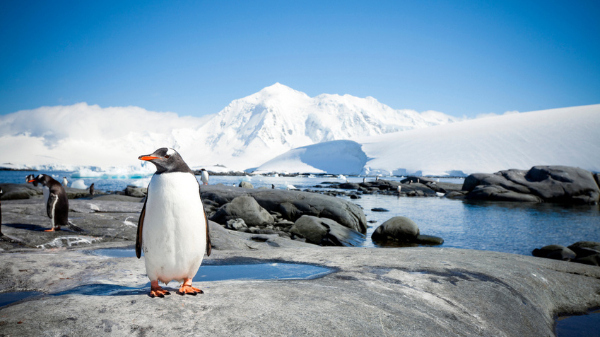
A research team at the Scripps Institution of Oceanography at the University of California, San Diego has made the first-ever detection of groundwater beneath an Antarctic ice stream. Scientists had hypothesized areas of Antarctica had groundwater beneath the continent’s millions of tons of ice, but this is the first time research has verified the theory.
The team detected a large subsurface lake by using a geophysical electromagnetic (EM) method called magnetotellurics, which observes variations in Earth’s electric and magnetic fields to measure subsurface resistivity. This research gives a better understanding of the factors that affect how Antarctica might respond to climate change. In particular, groundwater beneath ice streams can affect ice flows on the continent and might influence how ice moves from the interior to the coasts.
Although Scripps has imaged only one ice stream thus far, “there is probably groundwater beneath more Antarctic ice streams,” said study coauthor Helen Amanda Fricker, a Scripps glaciologist and codirector of the Scripps Polar Center.
“It’s been a hypothesis from our understanding of how the planet works that there’s groundwater under Antarctica, but we haven’t been able to measure it before,” said Fricker. “This technique typically hasn’t been used in polar environments. This is a nice demonstration of the power of the technique and how much it can bring to our knowledge of not just Antarctica, but Greenland and other glacier regions, as well.”
In addition to adding to the factors that have to be accounted for in order to obtain a better understanding of how climate change might affect ice loss in Antarctica and its potential contribution to sea level rise, the research team hopes its efforts will contribute to interplanetary research because “[g]roundwater may exist under similar conditions on other planets or moons that are releasing heat from their interiors,” according to Scripps researchers.
SOURCES: Scripps Institution of Oceanography
Heartland’s Must-read Climate Sites
In A Bad Market, Green Tech Takes Biggest Dive
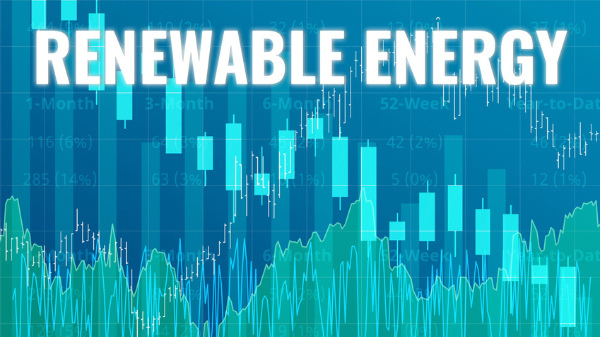
“The bio-waste has hit the wind turbine. … That’s clean energy talk for the you-know-what hitting the fan.” writes the Financial Post in reporting renewable energy companies and other green tech firms have been suffering especially steep declines in market value during the recent sustained stock market dive.
The relatively diversified green tech fund Invesco WilderHill Clean Energy ETF has dropped 60 percent from it 2021 peak. And that’s the good news for the fund: “those losses represent an average decline. Riskier stocks on the clean-energy spectrum have lost much more,” the Financial Post reports.
Many green hydrogen companies, those developing fuel-cell technologies, have lost 80 percent of their value. Companies working on EV battery storage, which was already losing them money, have suffered similar declines in their value as the prospect for competitive returns down the road fades. The continuing losses and steeper declines in value are due in part to supply chain problems and higher prices for components.
“For now, the days of cheap money chasing expensive dreams are over,” writes Peter Tertzakian, deputy director of the ARC Energy Research Institute. “Investors will still finance early-stage companies, but they’ll be a lot more discriminating about the quality of the investment opportunity and its valuation.”
Green tech companies are typically riskier than average, with much longer time horizons for returning profits to their owners, which means they may have less venture capital flowing to them in the coming years.
SOURCE: Financial Post
Video of the Week: Climate Change at Davos
Climate change was discussed heavily at the World Economic Forum’s annual meeting in Davos. In the view of our global “leaders,” climate action must take place now to avoid an impending catastrophe. Speakers included John Kerry, Al Gore, and Bill Gates.
There is no climate catastrophe. Extreme weather events are not becoming more frequent nor more severe, food production is soaring year after year, and temperatures are well within historical norms. The elites at Davos desire to use climate change to change the world for their benefit. They’re not trying to protect you.
BONUS Video of the Week: Climate Lunatic Smears Cake on Mona Lisa
The Mona Lisa was recently vandalized in the name of climate change. No one should be surprised. Why? People across the globe are hit with a barrage of corporate media stories falsely claiming climate change is a catastrophic threat to humanity’s survival. This breeds radicalism that leads to events such as the Mona Lisa attack in France.
Check out the Climate Change Roundtable, the source of this clip, every Friday at 12pm CT.
Climate Comedy
 via Cartoons by Josh
via Cartoons by Josh


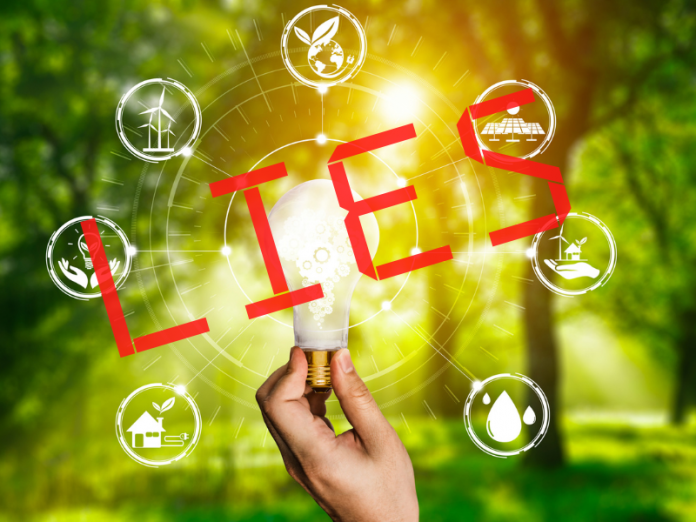
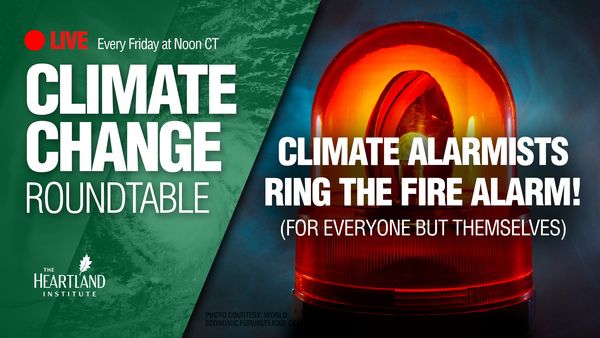
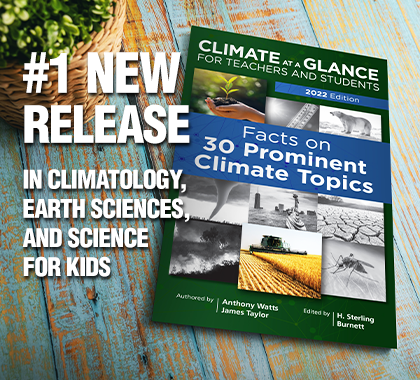


























[…] From Heartland Daily News […]
[…] From Heartland Daily News […]
[…] From Heartland Daily News […]
[…] From Heartland Daily News […]
You report, “As for biofuels, they no longer typically require more energy to produce than they deliver, thanks to technological improvements and increased efficiencies, but it is still doubtful they produce net benefits for the environment or the climate.”.
I can’t understand how this is possible. When the energy for plowing, planting, fertilizing, sprayiing, cultivating, irrigating, transporting, processing, fermenting, water delivery and disposal consumption is included. If it truly does provide a net gain, how much 10%? I think the gain is all about giving energy credit to the byproduct cattle feed. Converting a carbohydrate to a hydrocarbon replacement has to be net negative if only the ethanol is counted.
[…] From Heartland Daily News […]
[…] Public relations campaigns and activists’ claims to the contrary, green energy isn’t that green, and it certainly isn’t good for consumers.Heartland Daily News […]